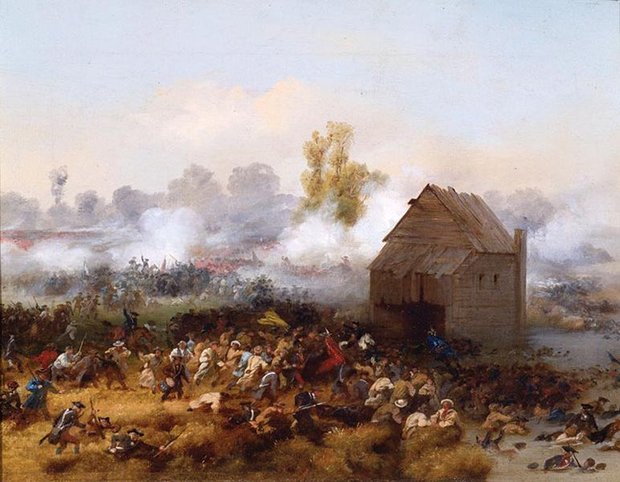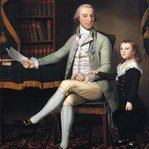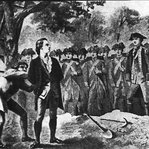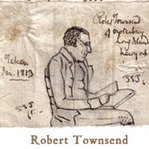You might have watched the AMC television show TURN: Washington’s Spies but did you know how to sort fact from fiction in the show? While it was well-made and enormously entertaining, the show takes some, ahem, liberties with its historical source material. Here we present some crazy facts about the Culper Spy Ring right here on Long Island that was pivotal in winning the Revolutionary War.
- It is said that Nathan Hale’s capture and execution in September 1776 let to the formation of the spy ring
- He famously explained, “I only regret that I have but one life to give for my country.”
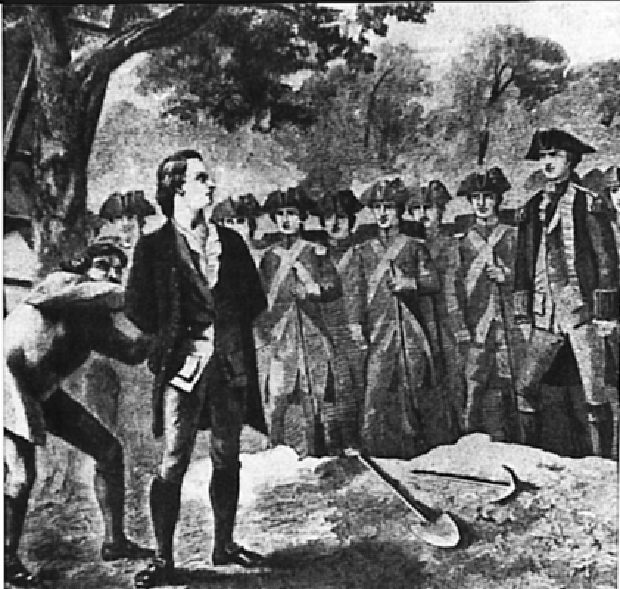
Photo: Public Domain.
- The spy ring's main objective was to send messages to General George Washington about the British Army’s activities in New York City
- The British also set up camps in Strong’s Neck and Setauket on the north shore of Long Island
- The spy ring famously exposed a plot by the turncoat American officer Benedict Arnold to betray an American fort at West Point to the British
- The spies used coded texts and special invisible ink to transmit messages
- The invisible ink was invented by Sir James Jay, brother of John Jay, first Chief Justice of the United States
- Abraham Woodhull, a leader in the spy ring was known as "Samuel Culper" and then later as "Samuel Culper Sr”
- Woodhull was from Setauket
- He was recruited as a spy by his friend and neighbor Major Benjamin Tallmadge, a military officer in the Continental Army
- Woodhull died at 75 in 1826
- He is buried in Setauket Presbyterian Church Cemetery
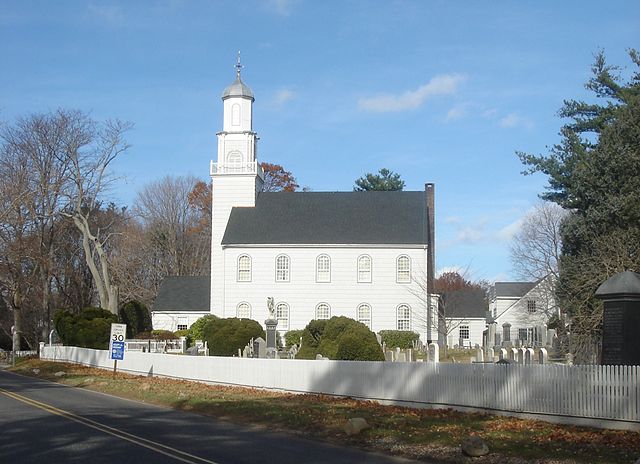
Setauket Presbyterian Church Cemetery. Photo: Traitor [CC BY-SA 3.0 (https://creativecommons.org/licenses/by-sa/3.0)]
- His epitaph reads “To him and his associates have been credited a large share the success of the Army of the Revolution”
- Major Benjamin Tallmadge led a daring mission during the war where he crossed the Long Island Sound from Connecticut and landed in Mount Sinai’s Cedar Beach. He trekked with his men to the south shore where in Shirley he and his men burned down a fort called the Manor St. George. On their way back they burned hay that British forces had stockpiled for the winter in Coram
- The 20-mile march is now preserved on Long Island by the Tallmadge Trail
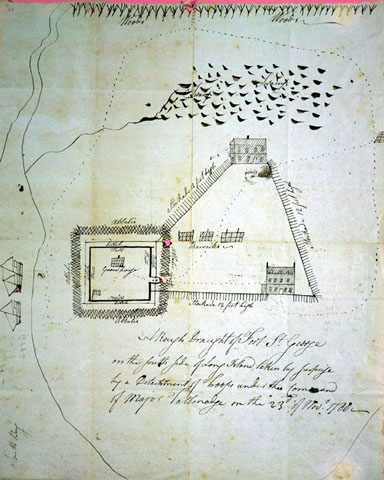
The Manor St. George as sketched by Benjamin Tallmadge during the Revolutionary War. Benjamin Tallmadge? / Public domain
- Caleb Brewster was also a friend and neighbor of Woodhull and he helped carry messages between Woodhull and Tallmadge
- Brewster also ran missions across the Long Island Sound
- After the war, Brewster joined the United States Revenue Cutter Service, a precursor to the United States Coast Guard
- The U.S. Revenue Cutter Service protected American Tariffs on the waterways
- It was formed in part by Alexander Hamilton to protect this important source of revenue
- Joseph Brewster, a tavern owner who entertained British troops, was Caleb Brewster’s cousin
- Claeb Brewster was said to have visited his tavern home many times
- Joseph Brewster also ended up being on the committee that built Route 25A
- Route 25A is also known as Washington’s Spy Trail and formerly, The King’s Highway
- The family home was built in 1665 and still stands today. It is considered the oldest houses in the Town of Brookhaven
- Another key player in the spy ring, Robert Townsend, of Oyster Bay, who was recruited by Abraham Woodhull in 1778
- He became known by his codename “Samuel Culper, Junior”
- Townsend was a shop owner, merchant, and reporter who frequented New york City, where the British had control and his communications were important to the success of the spy ring
- Townsend is buried in Fort Hill Cemetery in Oyster Bay
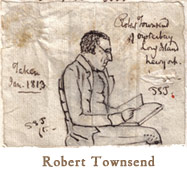
Only surviving portrait of Robert Townsend. Photo: Public Domain.
- In the television series, Turn, Major John Simcoe is portrayed as one of the main antagonists of th Abraham Woodhull
- This turns out not to be too far from the truth as Simcoe did command a light infantry known as the Queen’s Rangers
- In 1779, Simcoe found out that Abraham Woodhull was a spy and he travelled to Setauket to find him
- An episode between Simcoe and Woodhull’s father in Setuaket later resulted in Woodhull writing that he’d like to kill Simcoe “for his usage to me”
- Simcoe Street in Oyster Bay leads to Townsend Cemetery
- Simcoe is also credited with sending the very first American Valentine's day letter on February 14, 1779
- Anna Strong, of Setauket, might have been the only female member of the spy ring
- After her husband was arrested and send to Connecticut, Anna Strong stayed behind in Setauket to look after their home - protecting it
- Using a system of hanging laundry on a clothesline, Strong helped to show Abraham Woodhull where Caleb Brewster would arrive from Connecticut and where to meet him
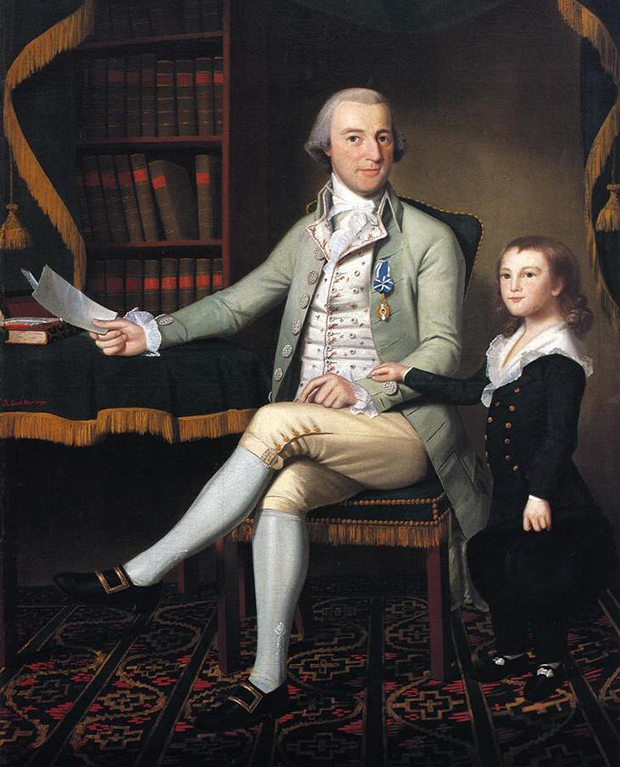
English: Portrait of Colonel Benjamin Tallmadge, an influential member of the Continental Army during the American Revolutionary War, with his son William Tallmadge. This is a 1790 portrait by American painter Ralph Earl. Public Domain.
- Morton Pennypacker was a historian who in 1939 wrote the book "George Washington's Spies,” which brought to light the efforts of the spy ring
- Previously no one had ever really known about the work the spy ring had done since the Revolutionary War
- Pennypacker was able to match the handwriting of Robert Townsend to “Samuel Culper, Junior,” the head spy of the Culper Ring
- Many historians agree on the importance of the Culper Spy Ring and if it was for their efforts, we’s all be speaking with British accents right now
- George Washington’s codename in the Culper Spy RIng was “Agent 711”
- There is a blog called ““TURN to a Historian” for anyone who wants to check the historical accuracy (and inaccuracy) of the television drama
- Rebels were chained up by the British at low tide to the rocks at the base of a lighthouse between Sands Point and Connecticut in the Long Island Sound. As the tide came up the prisoners drowned. This place became known as Execution Rocks
- In 2017, a 50-mile stretch of Route 25A from Great Neck to Port Jefferson was officially designated as the Washington Spy Trail with informational signs installed along the route
- You can explore the spy trail on your own; there are also many tours to take










